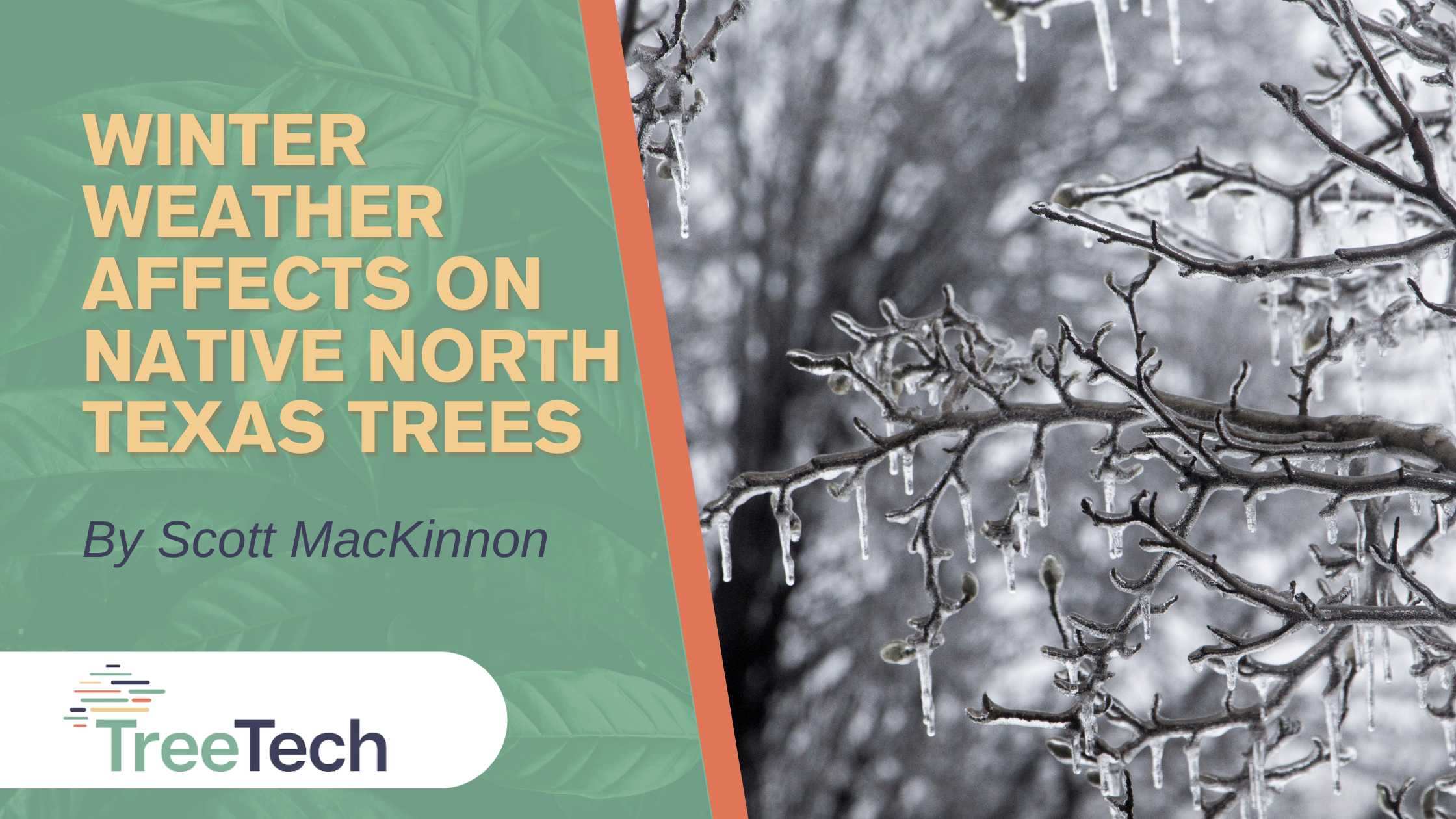North Texas, known for its diverse landscapes and unpredictable weather patterns, experiences a winter season that brings about unique challenges for its local flora. Native North Texas trees, adapted to the extremes of the Texan climate, face distinct transformations during the colder months. From frosty nights to occasional snowfall, the winter weather in North Texas significantly influences the health and resilience of the area’s trees.
Knowing how the Texas winter weather may affect the trees on your property is vital to properly caring for them this season. At TreeTech we work hard to ensure our clients in the Dallas-Fort Worth Metroplex are ready for the incoming low temperatures! Here are a few of the ways that the weather this season may affect your trees.
Temperature Fluctuations
One of the primary factors affecting trees in the Dallas-Fort Worth Metroplex during winter is the unpredictable temperature fluctuations. The region experiences a rollercoaster of temperatures, swinging from mild to freezing within short periods. These abrupt changes in winter weather can have profound effects on the physiological processes of trees.
Many native North Texas trees are deciduous, shedding their leaves as winter weather approaches. The dropping temperatures trigger the process of senescence, where trees reabsorb nutrients from their leaves before shedding them. However, when temperatures fluctuate dramatically, this process can be disrupted. Sudden warm spells may prematurely awaken dormant trees, only for them to be shocked by subsequent freezes. This can lead to damage, affecting the overall health and vitality of the trees.
Frost and Freezing Conditions
Frost and freezing conditions are common in North Texas during winter, posing additional challenges to the local tree population. The formation of ice crystals on tree surfaces can damage cells and disrupt normal cellular activities. Particularly vulnerable are young trees and those with thin bark, as they lack the insulation provided by thicker bark found in more mature specimens.
Certain tree species, like the southern live oak and the bald cypress, are more resistant to freezing conditions due to their adaptation to the local climate. However, even these hardy species can suffer when extreme cold persists. Frost damage may manifest as browning or blackening of leaves and stems, weakening the tree’s overall structure.
Snowfall and Ice Accumulation
While North Texas doesn’t see snowfall as frequently as some northern states, occasional winter storms can bring a blanket of snow or freezing rain to the region. The weight of snow or ice accumulation can pose a significant threat to trees. Branches, already weakened by freezing conditions, may succumb to the added weight, leading to breakage and potential long-term damage.
Additionally, ice accumulation on branches and leaves can interfere with the tree’s ability to photosynthesize. Photosynthesis is a crucial process that allows trees to produce food, and any disruption can impact their growth and overall health. Trees that experience heavy ice accumulation may exhibit stunted growth and reduced vitality in the following growing season.
Soil Moisture and Root Health
Winter weather in North Texas is not only characterized by cold temperatures but also by changes in soil moisture levels. Extended periods of freezing weather can lead to the freezing of soil moisture, affecting the availability of water to tree roots. This can be especially challenging for evergreen trees, which retain their leaves throughout the winter and continue to lose water through a process called transpiration.
The freezing and thawing of soil can also lead to soil heaving, where the ground alternately expands and contracts. This process can expose tree roots to the harsh winter air, making them more susceptible to damage. Additionally, soil compaction from winter precipitation and human activities can negatively impact root health by restricting oxygen and nutrient uptake.
Native North Texas Trees Resilience
North Texas is home to a variety of tree species, each with its own set of adaptations to survive the challenges presented by winter weather. Native species such as the Texas red oak and the pecan tree have evolved to thrive in the local climate. These trees exhibit resilience to temperature fluctuations and are well-adapted to the region’s soil conditions. Here are ten of the most popular native North Texas trees that thrive through Texas winters.
- Cedar Elm
- Southern Live Oak
- Bald Cypress
- Texas Ash
- Crape Myrtle
- Red Bud
- Bur Oak
- Shumard Oak
- Texas Magnolia
- Texas Pecan
- Eastern Red Cedar
Conversely, non-native or introduced species may struggle to cope with the extremes of North Texas winter weather. Some exotic trees may not have the necessary adaptations to withstand sudden temperature changes, leading to increased susceptibility to winter-related stressors.
The winter weather in Dallas-Fort Worth presents a unique set of challenges for the local tree population. From temperature fluctuations and frost to occasional snowfall and ice accumulation, trees in the region must adapt to survive the winter months. Understanding these challenges is crucial for arborists, landscapers, and homeowners alike, as it allows for better tree care practices and the selection of tree species that are well-suited to the region’s climate.
At Tree Tech, we know that knowledge is power! Keeping up-to-date with the weather in your area using sources such as the Weather Channel. In addition to knowing what weather to expect each week, being ready to take action if you need is key to protecting your yard. Your trees are resilient but still need to be cared for. To schedule a consultation with our certified arborists, feel free to contact us today!

Recent Comments